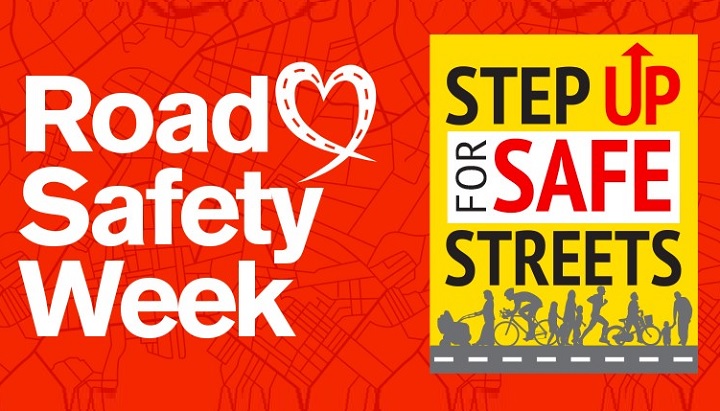Country roads are also known as back roads, or rural roads! You may find that country roads are of lesser quality – due to farming machinery and lorries who use them – and often the councils do not prioritise country roads to be maintained, as they prioritise ‘main roads’ where the majority of traffic travels.
Country roads are often narrow, have more bends, less signage, and poor quality road markings – again due to not being maintained as a priority. You may also find that country roads are in complete darkness at night time – they often do not have street lights, making it harder to negotiate bends and other hazards safely.

Road markings and signs
Be aware that due to the country roads not being a priority for maintenance, there may be signs missing or damaged, and road markings that are very faded, so much so that you can’t see them. Be aware if you are approaching junctions where there are no road markings – technically no-one would have priority. Approach such junctions with caution and proceed carefully. Always be alert and aware of your surroundings.
Hidden junctions
You may encounter hidden junctions and junctions on bends. Be cautious when approaching bends – you don’t always know what’s around the corner! Junctions on bends may be well hidden and may not always have warning signs – so be aware of emerging vehicles, especially large vehicles such as tractors.
Large vehicles
You may come face to face with tractors or lorries – lorries may be delivering to local farms, or taking produce from the farm to supermarkets. Tractors and other heavy farming machinery will be out and about, especially during the summer months when they harvest their crops. Be aware of what’s around you when you see a tractor or lorry approaching you – take into consideration that they may need more room and may take up more space. Be prepared to slow down, move over if the road space allows you to, and even be prepared to stop if necessary.
Animals
You may also come across wildlife – such as dears, cows, sheep etc.

Horse riders may also be out and about.
The Highway Code, Rule 214 says – When passing animals, drive slowly. Give them plenty of room and be ready to stop. Do not scare animals by sounding your horn, revving your engine or accelerating rapidly once you have passed them. Look out for animals being led, driven or ridden on the road and take extra care. Keep your speed down at bends and on narrow country roads. If a road is blocked by a herd of animals, stop and switch off your engine until they have left the road. Watch out for animals on unfenced roads.
Cyclists and pedestrians
Always look out for cyclists, and pedestrians who may be walking or running. Cyclists and pedestrians may be alone, but may also be in groups. Again, be prepared to slow down, give plenty of room (at least 1.5 metres), and be aware that cyclists especially may suddenly swerve to avoid potholes, or may be blown by the wind into your path. Country roads rarely have paths, therefore you can fully expect to find pedestrians in the road. Pedestrians should always walk facing the traffic – for example, walking towards you on your side of the road. This is so that the pedestrian can see what is coming towards them and take action if needed (such as moving out of the way for heavy farming machinery or a lorry).
What’s the speed limit?
The speed limit for most country roads is 60mph. However, we should always take into consideration our surroundings and other factors. The speed we choose to go could be influenced by one or more of the following –
- Your vehicle condition – is your vehicle in excellent condition, with the brakes in good working order, has your car been serviced recently?
- The road condition – look out for dips, bumps, pot holes, the road cracking, etc. Watch out for mud or straw in the road, left behind from farming machinery or lorries etc.
- The weather – be aware of rain (whether it’s light or heavy!), storms, strong winds, snow, ice, fog. All of these could make the conditions more difficult to drive in. They could make the road surface slippery, and make visibility more difficult
- Who’s around you – look out for pedestrians, cyclists, animals etc, especially when approaching bends where you can’t see clearly around the bend
- The time of day – be aware that driving in the dark can be more dangerous and reduce your visibility. You may also be more tired at night. Equally, be cautious when driving in the sun, as this could blind you. Make good use of your sun visor and sunglasses. You may also find that driving in peak times (0700-1000 and 1600-1800), that it may be busier and you may have more traffic and hazards to deal with
- Your own ability – if you have less experience, you should consider being more cautious and taking your time
- Your own health at the time – if you are more tired, you should consider being more cautious and pulling over for a break where possible. If you have a headache or are in pain, you should also take this into consideration
- And many other factors! Can you think of any other factors which may help you decide your speed?
Passing places

Where roads are very narrow, passing places have been made so that you can pull over to allow oncoming traffic past. We should only pull into passing places on the left. The oncoming traffic may be able to pull into one of their passing places first. Be prepared to reverse into a passing place if necessary. You could also wait opposite a passing place, so that the oncoming vehicle can go into that passing place. You should consider the size of the oncoming vehicle, their speed, and their road positioning – does it look like they are going to slow down for you? Are they making an effort to find a passing place to pull into?
Top tips for driving on country roads
- Belt up – It could make a crucial difference in the event of an accident
- Watch your speed – Drive at a speed that won’t affect your decision-making ability
- Prepare for the unexpected – You might know the road like the back of your hand, but the conditions are always changing
- Reduce your speed on blind bends – You never know what could be around the corner
- Look out for blind summits and hidden dips – Keep an eye on road signs and slow down as you approach
- Put away any distractions – Ignore your phone, leave your sat nav alone, and wait until you’ve arrived safely to have that packet of crisps
- Stay in control – Drive to the conditions and be alert to unexpected hazards
Country roads are statistically more dangerous, with more deaths occurring on these types of roads. In 2017, 992 people were killed on country roads. In 2017, 77 people were killed on a motorway. You can see already, the massive difference in fatalities on country roads, compared to other types of roads. Source: RoSPA
Age of drivers who were killed or seriously injured in accidents on country roads
We’ve included some pictures of some statistics – and they are admittedly scary! More drivers are killed on country roads than any other type of road.
The likely reasons for this are –
- Speeding
- Not having proper control over their vehicle
- Being distracted – possibly by passengers, children, their mates in the car, sat navs, phones, eating or drinking etc
- Night time – drivers not being able to fully see where they are going
- Experience – maybe the driver didn’t have the skill to negotiate the country roads, or deal with situations as they arose. Statistically, younger drivers are more likely to be involved in an accident due to their inexperience
Remember – your driving instructor would be more than happy to cover country roads with you again, and even if you’ve passed your driving test, you can still have refresher lessons with your instructor!
We hope this helps and is informative!


























